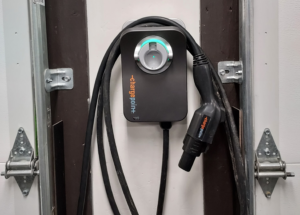In two recent blog articles (here and here) I have called out the USPTO for programming Patentcenter so that its Acknowledgment Receipts list false information about what a filer uploaded in Patentcenter. The practitioner wishing to independently check such things will thus be interested to know how to calculate a SHA-512 hash (Wikipedia article, what the USPTO calls a “message digest”) of a PDF or DOCX file on the practitioner’s hard drive. One way to do this is with a command-line utility within Microsoft Windows. Continue reading “How to calculate SHA-512 hashes in Microsoft Windows”
Patentcenter Ack Receipt lies
Today in a particular patent application I uploaded two PDFs in Patentcenter. The Ack Receipt says I uploaded five PDFs (which is not true). When I try to match up the three non-existent PDFs that the Ack Receipt says I uploaded (which I did not) with the three supposedly corresponding PDFs in IFW, the file names do not match and the SHA-512 hashes (message digests) do not match and the file sizes do not match. Nothing about this part of the Ack Receipt is true. Continue reading “Patentcenter Ack Receipt lies”
Getting a VPN
The other day I heard from a friend of mine that somebody they know “has a living situation in which she needs a VPN” and the question was, could I recommend “a good VPN”. These questions always drive me crazy. I will explain why. Continue reading “Getting a VPN”
Now you can binge-watch 14 hours of the Patent Cooperation Treaty
Would you like to attend a free-of-charge two-day advanced course on the Patent Cooperation Treaty? Here is your opportunity. This series of fifteen lectures on the PCT is available free of charge. You can watch these lectures from anywhere in the world, at whatever hour of the day or night is convenient for you. You can watch these lectures on your computer, on your smart phone, or on a tablet. You could project the lectures onto a big screen in a conference room and watch the lectures as a group activity.
Filing at the International Bureau and Daylight Saving Time
 It’s that time of year again. The time of year when it is important to keep track of the fact that Daylight Saving Time is different in Switzerland from the way it is in the United States. This is important because you might be in the US, and you might be e-filing some document with the International Bureau of WIPO. For the next two weeks (until March 27), the drop-dead time for e-filing a document at the IB is an hour later than usual. Usually, to get a same-day filing date at the IB, an American filer would have to complete the e-filing by 4PM Mountain Time (which is midnight in Geneva). But for the next two weeks, you get an extra hour. You could complete the e-filing by as late as 5PM Mountain Time and it would still be a same-day filing date.
It’s that time of year again. The time of year when it is important to keep track of the fact that Daylight Saving Time is different in Switzerland from the way it is in the United States. This is important because you might be in the US, and you might be e-filing some document with the International Bureau of WIPO. For the next two weeks (until March 27), the drop-dead time for e-filing a document at the IB is an hour later than usual. Usually, to get a same-day filing date at the IB, an American filer would have to complete the e-filing by 4PM Mountain Time (which is midnight in Geneva). But for the next two weeks, you get an extra hour. You could complete the e-filing by as late as 5PM Mountain Time and it would still be a same-day filing date.
This might affect you because you are e-filing a PCT patent application at RO/IB. This might affect you because you are e-filing a Hague Agreement design application at the IB. This might affect you because you are paying a set of Madrid Protocol renewal fees at the IB. Or maybe you are filing an Article 19 amendment or a Demand at the IB.
Most readers of my blog will appreciate that the correct terminology is not “Daylight Savings Time” but “Daylight Saving Time”.
Many readers will also appreciate that EU has been trying and trying to bring this to an end. There have also been largely feckless efforts in various states of the US to bring an end to this clock-changing. I personally would like it if the place where I am located, and the places where patent and trademark offices are that I care about, would all bring an end to clock-changing.
Being alerted when a vehicle enters your driveway

If I am in my house and I hear a certain chime, it tells me that a vehicle has entered the driveway. I find this to be very convenient. Maybe this is during the day and it lets me know that a UPS truck or Fedex truck is arriving. Or maybe it is in the evening and it lets me know that the expected dinner guests are arriving. Either way, I can bestir myself and head down to the front door and greet the arriving visitor with a bit of advance warning. How does it work, you might wonder? I will tell you. The photograph above right helps to explain how it works. Continue reading “Being alerted when a vehicle enters your driveway”
Time to switch to an EV

In a weird way I got lucky. Fifteen months ago, two things happened:
- an inattentive driver smacked into the back of my ICE car, totaling it (and thankfully not injuring anybody), and
- a client of my firm that had left some bills unpaid for a very long time happened to pay its bills rather unexpectedly.
I then paid cash for an electric vehicle. Continue reading “Time to switch to an EV”
An excellent word: zhuzh
 To make something more lively or interesting, stylish, or appealing, as by a small change or addition. The word is usually used in a phrase like “zhuzh it up”. Continue reading “An excellent word: zhuzh”
To make something more lively or interesting, stylish, or appealing, as by a small change or addition. The word is usually used in a phrase like “zhuzh it up”. Continue reading “An excellent word: zhuzh”
Working out the evils in the variants of the USPTO’s DOCX adhesion contract
(Update: it is time for you, dear reader to consider signing another letter. See blog posting.)
Earlier today I posted the dismaying realization that Patentcenter lies about the DOCX file that you uploaded (blog article).
This has a very disappointing interplay with the adhesion contract that the USPTO people have had in mind for the people who file DOCX patent applications at the USPTO. We are now on our third variant of the adhesion contract, and arguably this most recent variant is far worse than either of the previous two variants. Continue reading “Working out the evils in the variants of the USPTO’s DOCX adhesion contract”
Patentcenter lied in the ack receipt about the DOCX file that I uploaded
(Update: it is time for you, dear reader, to consider signing another letter. See blog posting.)
Now I have seen with my own eyes what others have reported. Until I saw it myself I could not be sure.
Yes, it really is true that Patentcenter sometimes lies about what exactly the document is that the filer uploaded to Patentcenter. The Acknowledgment Receipt sometimes lies.
This is a profoundly serious matter.
For what it’s worth, so far as I can see, the lying happens only with DOCX files. It looks to me like the lying does not happen with PDF files.
It seems that customers who use Patentcenter are going to need to scrutinize their ack receipts very closely between now and such time as the Patentcenter developers get this corrected.
Continue reading “Patentcenter lied in the ack receipt about the DOCX file that I uploaded”
